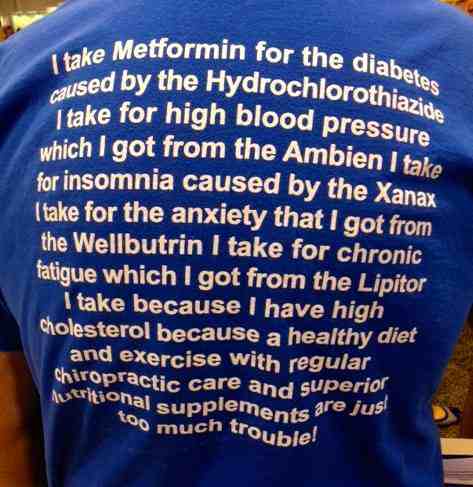Week of: Monday Jan. 13, 2020
Courtesy of:
John H. Keefe III, D.C.
(918) 663-1111

IN THE NEWS: Scientists Now Know How Sleep Cleans Toxins From the Brain
The synchronized brain waves of non-REM sleep may play a key role in preventing toxins from accumulating in a person's brain. Researchers have been putting in late nights in their Boston University lab. Lewis ran tests until around 3:00 in the morning, then ended up sleeping in the next day. It was like she had jet lag, she says, without changing time zones. It’s not that Lewis doesn’t appreciate the merits of a good night’s sleep. She does. But when you’re trying to map what’s happening in a slumbering human’s brain, you end up making some sacrifices. “It’s this great irony of sleep research,” she says. “You’re constrained by when people sleep.” When we sleep our brains travel through several phases, from a light slumber to a deep sleep that feels like we’ve fallen unconscious, to rapid eye movement (REM) sleep, when we’re more likely to have dreams. Lewis’ work looks at non-REM sleep, that deep phase which generally happens earlier in the night and which has already been associated with memory retention. One important 2013 study on mice showed that while the rodents slept, toxins like beta amyloid, which can contribute to Alzheimer’s disease, got swept away. What she discovered was that during non-REM sleep, large, slow waves of cerebrospinal fluid were washing over the brain. The EEG readings helped show why. During non-REM sleep, neurons start to synchronize, turning on and off at the same time. “First you would see this electrical wave where all the neurons would go quiet,” says Lewis. Because the neurons had all momentarily stopped firing, they didn’t need as much oxygen. That meant less blood would flow to the brain. But Lewis’s team also observed that cerebrospinal fluid would then rush in, filling in the space left behind. The study also could have clinical applications for treating Alzheimer’s. Recent attempts at developing medications have targeted beta amyloid. But drugs that looked promising at first all failed once they got into clinical trials. “This opens a new avenue,” says Nedergaard. Instead of trying to act on one particular molecule, new interventions might instead focus on increasing the amount of cerebrospinal fluid that washes over the brain.

WELLNESS: Imbalance of fatty acids linked to most common age-related diseases Chronic disease is on the rise. Right now, 133 million Americans – nearly half the population – have at least one chronic illness such as diabetes or heart disease. With so much illness prevalent – and with the aging of the population overall – it’s no wonder many individuals are worried about healthy aging. But, could consuming the proper amount of omega 3 fatty acids be part of the solution? Research shows most Americans are not consuming enough omega 3 fatty acids in their diets. Turns out this is hugely problematic, and not just because people aren’t getting enough of these healthy nutrients. People also aren’t consuming the right ratio of fatty acids – which is believed to be a major driver of age-related health problems. Omega 3 fatty acids, including EPA (eicosapentaenoic acid) and DHA (docosahexaenoic acid), are healthy nutrients found abundantly in fatty fish. Another kind of fatty acids are called omega 6 fatty acids. These are primarily found in foods containing sunflower, cottonseed, soybean, and corn oils – in other words, processed foods. This is exactly why the modern diet (which is heavy with processed foods) causes humans to consume way more omega 6 fatty acids and not enough omega 3 fatty acids. In ancient history, our ancestors’ diet included a more balanced omega 6 to omega 3 ratio of about 4 to 1. Today’s typical human has a ratio of 20 to 1! Why is this extreme ratio so bad for health and believed to be driving age-related diseases? Well, the most common type of omega 6 fatty acid (called linoleic acid) gets transformed in the body into a substance that promotes inflammation and blood vessel constriction. While this isn’t necessarily “bad,” it is bad when so much omega 6 is being consumed that these inflammatory and blood vessel changes becomes chronic and widespread, which we see in things like heart disease. NOTE: do you need more omega 3, 6 or 9. Getting Vega testing can help determine your balance.

CHIROPRACTIC: 21 Benefits you might not have known: Improves joint mobility, function and health. Makes tight muscles loose and loose muscles tight and improves the contractibility (thereby strength) of the muscle. Decreases degeneration of the joint and connective tissues (arthritis). Decreases the on--going inflammatory process associated with the subluxation. Improves circulation taking stagnant blood out and bringing new blood in. Speeds up the recovery process. Improves nerve system function and the individual nerve’s ability to carry nerve impulses more efficiently. Strengthens the immune system. Improves individual organ system function (heart, lung, sinuses, digestive, etc). Improves a person’s disposition (they’re more FUN to be around). Calms a hyperactive mind and energizes a depressed mind. Increases energy, vitality and improves sleep. Relieves/Improves Prenatal Discomfort Decreases length of labor and associated back pain. Decreases the adverse effects of stress. Improves athletic performance (for ANY sport). Improves Quality of Life by enhancing the enjoyment/fulfillment of a person’s Key Values Prevention ability for sickness, disease and pain. Improves overall health and wellness for infants and children. Improves cognitive ability (ability to THINK more clearly). Oh…and it DECREASES PAIN!

FUNNY BONES: During the heat of the space race in the 1960's, NASA quickly discovered that ballpoint pens would not work in the zero gravity confines of its space capsules. After considerable research and development, the Astronaut Pen was developed at a cost of $1 million. The pen worked in zero gravity, upside down, underwater, on almost any surface including glass and also enjoyed some modest success as a novelty item back here on earth.
The Soviet Union, when faced with the same
problem, used a pencil.
Visit our web sites: keefeclinic.com & facebook.com/keefeclinic

